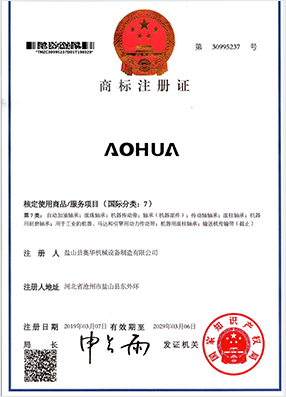 Afrikaans
Afrikaans  Albanian
Albanian  Amharic
Amharic  Arabic
Arabic  Armenian
Armenian  Azerbaijani
Azerbaijani  Basque
Basque  Belarusian
Belarusian  Bengali
Bengali  Bosnian
Bosnian  Bulgarian
Bulgarian  Catalan
Catalan  Cebuano
Cebuano  Corsican
Corsican  Croatian
Croatian  Czech
Czech  Danish
Danish  Dutch
Dutch  English
English  Esperanto
Esperanto  Estonian
Estonian  Finnish
Finnish  French
French  Frisian
Frisian  Galician
Galician  Georgian
Georgian  German
German  Greek
Greek  Gujarati
Gujarati  Haitian Creole
Haitian Creole  hausa
hausa  hawaiian
hawaiian  Hebrew
Hebrew  Hindi
Hindi  Miao
Miao  Hungarian
Hungarian  Icelandic
Icelandic  igbo
igbo  Indonesian
Indonesian  irish
irish  Italian
Italian  Japanese
Japanese  Javanese
Javanese  Kannada
Kannada  kazakh
kazakh  Khmer
Khmer  Rwandese
Rwandese  Korean
Korean  Kurdish
Kurdish  Kyrgyz
Kyrgyz  Lao
Lao  Latin
Latin  Latvian
Latvian  Lithuanian
Lithuanian  Luxembourgish
Luxembourgish  Macedonian
Macedonian  Malgashi
Malgashi  Malay
Malay  Malayalam
Malayalam  Maltese
Maltese  Maori
Maori  Marathi
Marathi  Mongolian
Mongolian  Myanmar
Myanmar  Nepali
Nepali  Norwegian
Norwegian  Norwegian
Norwegian  Occitan
Occitan  Pashto
Pashto  Persian
Persian  Polish
Polish  Portuguese
Portuguese  Punjabi
Punjabi  Romanian
Romanian  Russian
Russian  Samoan
Samoan  Scottish Gaelic
Scottish Gaelic  Serbian
Serbian  Sesotho
Sesotho  Shona
Shona  Sindhi
Sindhi  Sinhala
Sinhala  Slovak
Slovak  Slovenian
Slovenian  Somali
Somali  Spanish
Spanish  Sundanese
Sundanese  Swahili
Swahili  Swedish
Swedish  Tagalog
Tagalog  Tajik
Tajik  Tamil
Tamil  Tatar
Tatar  Telugu
Telugu  Thai
Thai  Turkish
Turkish  Turkmen
Turkmen  Ukrainian
Ukrainian  Urdu
Urdu  Uighur
Uighur  Uzbek
Uzbek  Vietnamese
Vietnamese  Welsh
Welsh  Bantu
Bantu  Yiddish
Yiddish  Yoruba
Yoruba  Zulu
Zulu belt guide rollers
Understanding Belt Guide Rollers Key Components for Efficient Material Handling
Belt guide rollers play a crucial role in various industrial applications, particularly in the fields of material handling, conveyor systems, and automated processes. These specialized components help maintain the alignment and stability of conveyor belts, ensuring smooth and efficient operations. In this article, we will delve into the specifics of belt guide rollers, their functionalities, types, advantages, and considerations for selection and maintenance.
What Are Belt Guide Rollers?
Belt guide rollers are rotating cylindrical components that guide and support the conveyor belt as it moves through the system. These rollers are strategically positioned along the conveyor path to keep the belt aligned, prevent slippage, and minimize wear. They are essential for maintaining the proper tension of the belt and ensuring that it operates efficiently under various load conditions.
Functions of Belt Guide Rollers
1. Alignment One of the primary functions of belt guide rollers is to ensure that the conveyor belt stays aligned during operation. Misalignment can lead to uneven wear, increased friction, and potential damage to the belt and other system components.
2. Support Guide rollers provide necessary support to the conveyor belt, distributing the weight of the loads carried. Proper support helps to maintain the integrity of the belt and reduces the risk of sagging or deformation.
3. Reduction of Friction By facilitating smooth movement, guide rollers help to reduce friction between the belt and the conveyor structure. This not only enhances performance but also extends the lifespan of both the belt and the entire conveyor system.
4. Load Management Guide rollers help to manage the load on the conveyor belt by ensuring that the weight is evenly distributed. This is crucial for preventing damage to the belt and avoiding potential downtime.
Types of Belt Guide Rollers
Belt guide rollers come in various types, each designed for specific applications
1. Flat Guide Rollers These are simple cylindrical rollers used for straight belt alignment. They are commonly found in standard conveyor systems.
2. V-Groove Rollers Designed for belts with V-shaped profiles, V-groove rollers provide enhanced grip and alignment, particularly in applications involving inclined or declined movement.
3. Tapered Rollers These rollers taper at the ends to facilitate better tracking of belts, especially in systems that experience high lateral forces.
4. Self-aligning Rollers Equipped with features that allow them to adjust their position dynamically, self-aligning rollers are ideal for handling misalignment issues that can occur during operation.
belt guide rollers

Advantages of Using Belt Guide Rollers
The implementation of belt guide rollers in conveyor systems offers numerous advantages
- Increased Efficiency By ensuring proper alignment and support, guide rollers contribute to fewer disruptions in operations, leading to increased productivity.
- Reduced Maintenance Costs Properly functioning guide rollers help extend the life of the conveyor belt and other components, resulting in lower maintenance and replacement costs over time.
- Enhanced Safety With minimized risk of belt slippage or wear, belt guide rollers promote safer operating conditions for employees and reduce the likelihood of accidents.
- Versatility Belt guide rollers can be adapted to various industries, from food processing to packaging, making them essential for tailored solutions in different contexts.
Key Considerations for Selection and Maintenance
When selecting belt guide rollers, it’s essential to consider several factors
- Material and Durability Choose rollers made from suitable materials that can withstand the specific environmental conditions and loads they will encounter.
- Load Capacity Ensure the selected rollers can handle the maximum weight of the loads carried on the conveyor system.
- Environmental Factors Consider factors like humidity, temperature, and exposure to chemicals when choosing rollers to ensure long-term reliability.
- Regular Maintenance Implement a regular maintenance schedule to inspect guide rollers for wear and tear, ensuring they remain functional and effective.
Conclusion
Belt guide rollers are integral components in ensuring the efficiency and reliability of conveyor systems. By maintaining alignment, providing support, and reducing friction, they play a vital role in promoting smooth operations across various industries. Understanding their functions, types, and maintenance needs can help businesses optimize their material handling processes, ultimately leading to increased productivity and cost savings. As industries continue to evolve, the importance of reliable components like belt guide rollers will only grow, making them essential to modern manufacturing and logistics.
-
Revolutionizing Conveyor Reliability with Advanced Rubber Lagging PulleysNewsJul.22,2025
-
Powering Precision and Durability with Expert Manufacturers of Conveyor ComponentsNewsJul.22,2025
-
Optimizing Conveyor Systems with Advanced Conveyor AccessoriesNewsJul.22,2025
-
Maximize Conveyor Efficiency with Quality Conveyor Idler PulleysNewsJul.22,2025
-
Future-Proof Your Conveyor System with High-Performance Polyurethane RollerNewsJul.22,2025
-
Driving Efficiency Forward with Quality Idlers and RollersNewsJul.22,2025





























